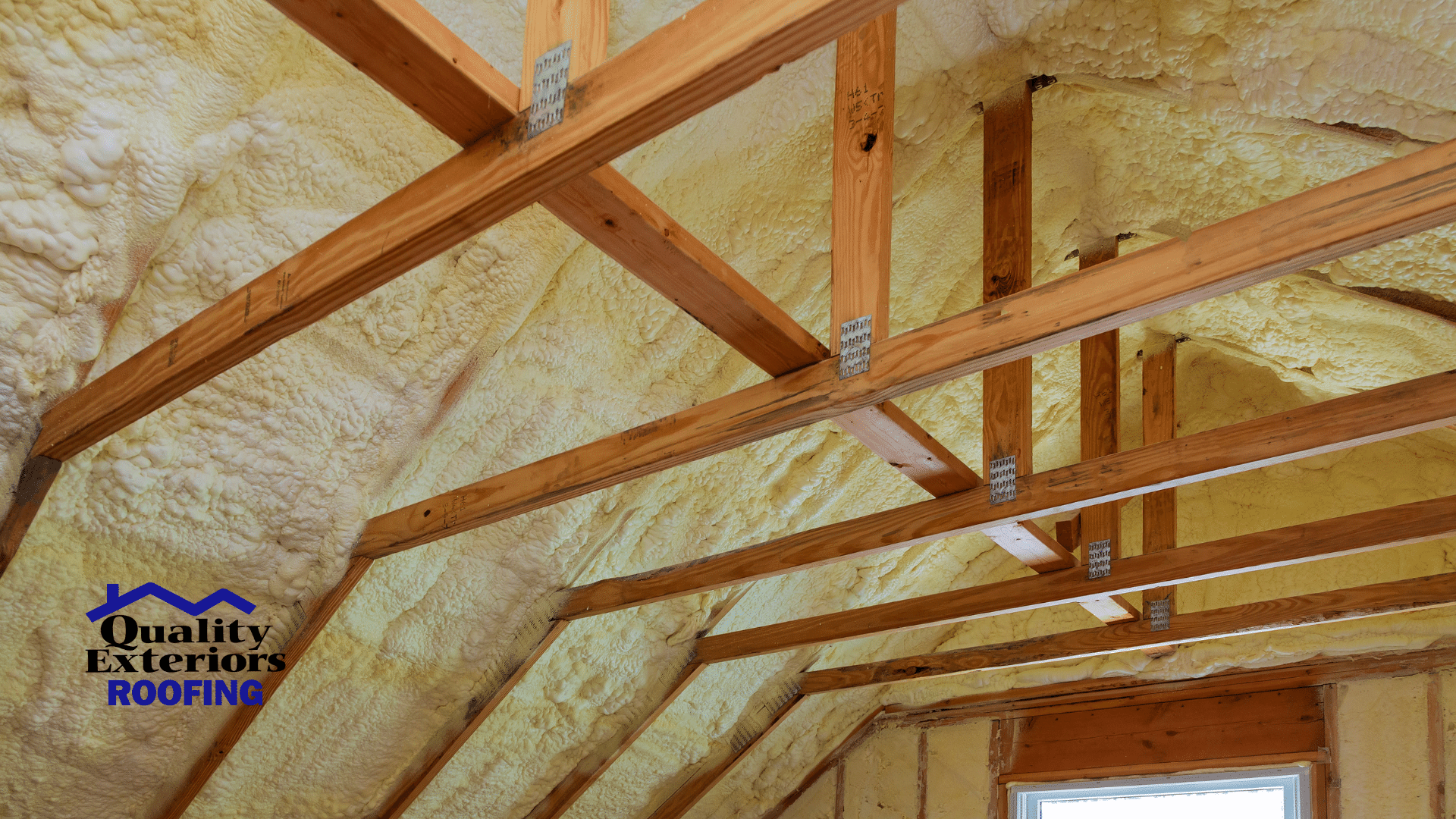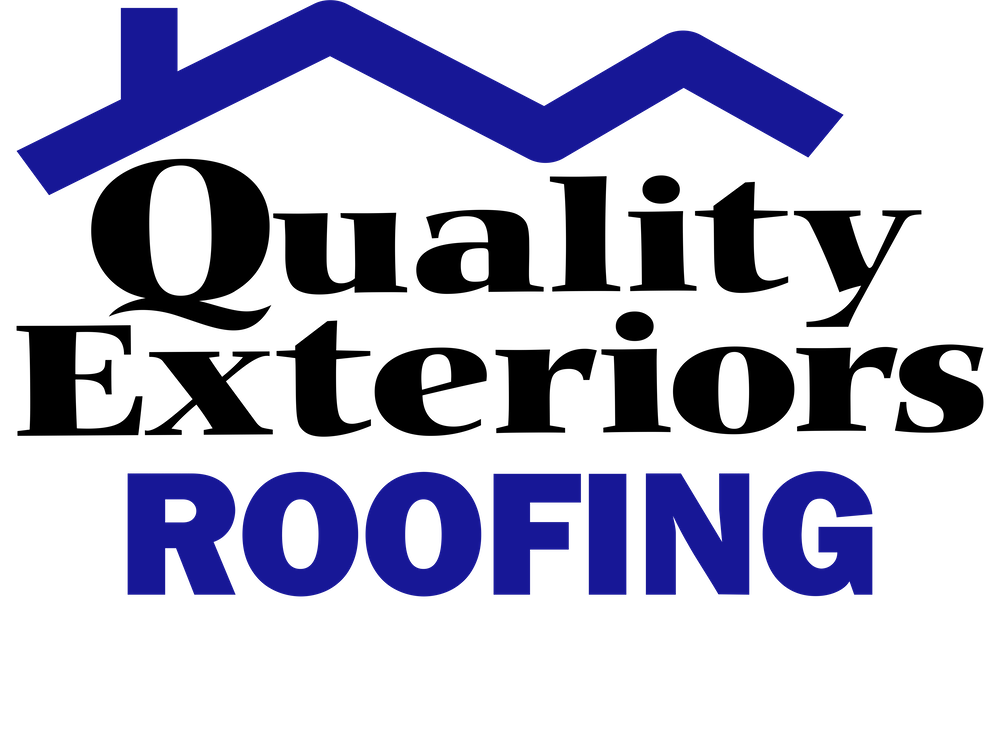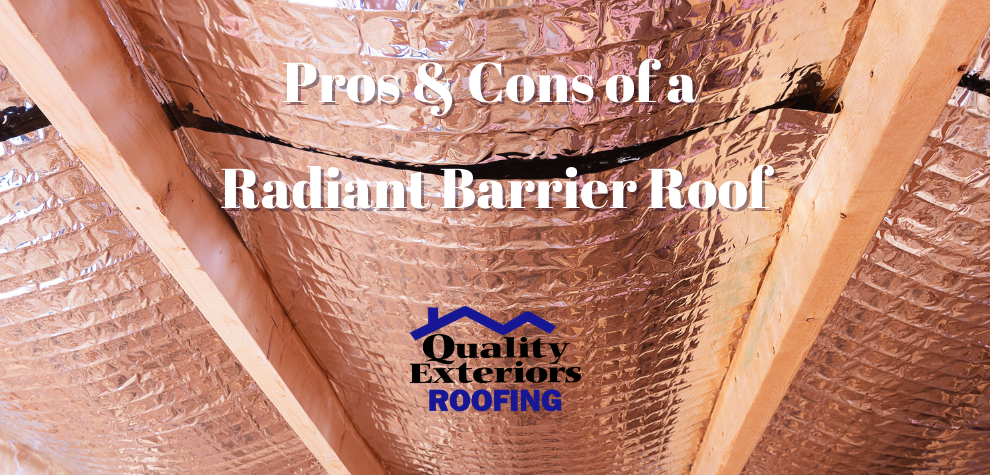We all know how hot it gets here in Louisiana during the summer. Often, it is a battle to keep the heat from rising inside our homes, as well. If you’re lucky, your air conditioner may finally catch a break in late autumn when it cools down outside.
Closing shades and drapes during the day, using your oven less, and using a programmable thermostat are all strategies to keep your house cooler and your energy expenses cheaper. The radiant barrier roof is another way.
That shiny, metallic material lining some attics? That’s a radiant roof barrier. And they’re simply another useful tool for keeping some of that Southern heat out of your house.
In this post, our Bossier City roofers at Quality Exteriors explore radiant barrier roofs, their pros and cons, and why they are an excellent option for keeping you from sweating over a high electric bill.
What Is a Radiant Barrier?
A radiant barrier roof is a reflecting surface that blocks radiant heat and acts as a barrier between your conditioned air space and the sun. Radiant heat is a type of heat transfer, which is the transfer of heat or thermal energy between physical items. As a result, heat is transported from the hot item to the cooler item.
This is seen when the heat from the sun intrudes into your home. The roof radiant barrier reflects this heat and reduces temperatures indoors and cooling costs. Commonly installed in attics, the heat is reflected rather than absorbed by the barrier.
However, unlike thermal insulation materials, barriers do not reduce the other two types of heat transfer – heat conduction and heat convection. The transfer of heat through physical contact is conduction. This is what happens when a chocolate bar melts in your hand, for example. Convection is the movement of heated fluid, such as air, over a short period of time. A hot air balloon uses convection to rise in the air.
A significant source of heat transfer into a home occurs in a home’s attic. Lying beneath the sun-exposed roof, an attic accounts for a large amount of square footage inside a home. Placing a radiant barrier on the underside of your roof limits heat gain in the attic, which in turn reduces heat in your home’s living space.
How Does a Radiant Barrier Roof Work?

Attics are hot under normal conditions due to the sun’s heat bearing down on the roof shingles. A radiant barrier roof reflects heat by using a highly reflective substance, such as aluminum, to line the inside of the attic.
As the roof shingles get hotter under the sun, they absorb as much heat as possible. Remember, heat is energy, and an item can only absorb so much. As a result, after the shingles fully heat, the extra energy needs somewhere to go. It’s absorbed by the closest material – your attic ceiling.
The ceiling absorbs as much heat as it can before the heat flows to other places like the walls. It’s a chain reaction that inevitably leads your entire house to become warmer.
Radiant barrier roofs work by deflecting heat away from your home and preventing it from spreading. Because hot air tends to rise, it doesn’t take much reflection to get the job done. A shiny material is usually all you need, though some materials are better than others.
Types of Radiant Barrier
Radiant barriers come in a variety of shapes and sizes. There are three types of radiant barrier products on the market: radiant barrier paint, foil-backed sheathing, and radiant barrier foil. Each offers a different level of heat-blocking effectiveness and advantages and disadvantages.
Radiant Barrier Paint
This is basically a liquid foil painted onto a surface. The key advantage of this product over the other two options is its fast and easy application. Unfortunately, this appears to be the only plus. Studies show this is the least effective method of preventing heat transfer. In fact, most of these paints don’t meet the criteria set out for radiant barriers.
Foil-Backed Sheathing
This type of radiation barrier is installed in attics in new home builds. The foil-backed sheathing is applied to roofing joists instead of the plywood or oriented strand board. The foil faces down toward the attic, decreasing heat through emissivity. The main benefit of this method is having your contractors use this instead of ordinary plywood when building a home. Of course, this isn’t a viable alternative if your house is already built.
Radiant Barrier Foil
The last form of radiation barrier is an after-market method, which entails stapling radiant barrier foil to the underside of the roofing joints. The foil’s main advantage is that it can be put in an existing attic by the homeowner. However, this can be difficult to install in high-pitched attics.
Pros of a Radiant Barrier Roof
A radiant barrier roof includes a number of advantages. First, it keeps your home cooler during the hot months. Anything that decreases the temperature of your home, instead of cranking up the A/C during the hottest days of the year, is a plus.
The second advantage is a lower electric bill. Limit the amount of work your air conditioner does by preventing your home from getting too hot in the first place. According to research conducted by the United States Department of Energy, placing a radiant barrier in the attic significantly reduces heat gain through the ceiling. This means as much as 10% savings in heating and cooling utility expenses in warm climates like Louisiana.
Cons of a Radiant Barrier Roof
The most obvious disadvantage is these roofs are meant for hotter temperatures. They aren’t very useful in the winter, though they may provide some additional insulation against the cold. As a result, the expense of a radiant barrier roof for generally cooler climates likely won’t be a good investment.
Radiant barrier roofs won’t work for every property. Certain building proportions, for reasons that aren’t totally understood, increase heat movement and reduce the radiant barrier’s efficiency. The slope of the roof, the type of roof shingles utilized, and ventilation all impact the amount of heat reflected.
Often, the additional expense of extra insulation is needed before a roof radiant barrier is installed. This prevents heat from transferring from one part of the house to another.
Perhaps the most prominent disadvantage of a radiant barrier roof is the fact that moisture frequently collects on its interior surface when water vapor inside the house evaporates and rises into the attic. Since radiant barrier materials repel both moisture and heat, the vapor condenses into small droplets that slide down the barrier and into your attic. Keep an eye out for this in the winter.
Do Radiant Barriers Cause Mold?
Mold is an ever-present concern in Louisiana. With our humid climate and frequent rainfall, the last thing a homeowner wants is mold growth. The efficacy of heat repellency is harmed when radiant barriers develop moisture problems. Furthermore, uncontrolled moisture can seep down onto other surfaces in the attic, resulting in water damage and mold.
It’s important to use perforated radiant barriers to avoid moisture problems. They allow water vapor to pass through, eliminating any condensation issues. Regular inspections can also assist you in identifying and repairing moisture problems, such as ceiling leaks.
Is Radiant Barrier Worth It?
Some tests demonstrated a radiant barrier reduces ceiling heat gains by up to 42%. This is a savings of up to 10% on electricity expenses for cooling. A radiant barrier system can be a cost-effective way to reduce attic heat and, as a result, energy expenditures in the correct situation. Its capacity to decrease radiant heat transfer is the key to its effectiveness.
In general, a radiant barrier roof is an excellent option that will certainly boost your level of comfort in hot climates.
Interested in a Radiant Barrier Roof in Bossier City? Reach Out to Quality Exteriors Roofing Today
Quality Exteriors is the place to go in Shreveport and Bossier City for high-quality roofing solutions. Our crew is pleased to help you with any of your roofing needs, whether it’s a radiant barrier roof, local roof replacements, or simply answering your questions about roofing materials. We provide all home exterior needs in the Shreveport-Bossier area, including but not limited to roofing, siding, and windows. For further information, please contact us at 318-747-1254. Our website also allows you to schedule a free home or business inspection!

